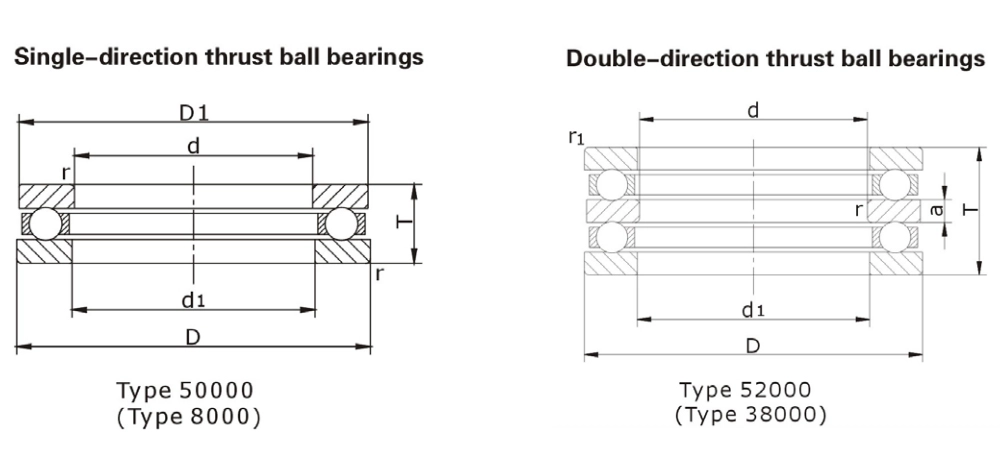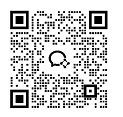What are the Signs of Wear in a Radial Thrust Ball Bearing?
Radial thrust ball bearings are critical components in various industrial applications, serving as the backbone of rotating machinery. Understanding the signs of wear in these precision-engineered components is crucial for maintaining equipment reliability and preventing catastrophic failures. This comprehensive guide explores the various indicators of bearing wear, common causes, and essential maintenance practices to ensure optimal performance and longevity.

How Do Environmental Factors Affect Radial Thrust Ball Bearing Wear?
Impact of Temperature Variations
Temperature fluctuations significantly influence the wear patterns of radial thrust ball bearings. When bearings operate outside their designed temperature range, the lubricant's viscosity changes dramatically, affecting its ability to maintain proper film thickness. High temperatures can cause thermal expansion of bearing components, potentially altering internal clearances and increasing friction. In severe cases, excessive heat can lead to lubricant breakdown, accelerating wear on the rolling elements and raceways. Modern radial thrust ball bearings typically incorporate special heat-treated materials and specific clearance designs to accommodate thermal variations, but proper monitoring and maintenance remain essential for optimal performance under varying temperature conditions.

Effects of Contamination Exposure
Environmental contamination poses a significant threat to radial thrust ball bearing longevity. Dust, debris, and moisture can infiltrate the bearing housing, leading to accelerated wear through abrasive action. When contaminants mix with lubricants, they form a grinding paste that gradually erodes the bearing surfaces. This process is particularly damaging to the precision-finished raceways and rolling elements, compromising the bearing's accuracy and load-carrying capacity. Advanced sealing solutions and regular maintenance procedures help mitigate these effects, but understanding the signs of contamination-induced wear remains crucial for early intervention.
Influence of Humidity and Moisture
Moisture exposure presents unique challenges for radial thrust ball bearings, potentially leading to corrosion and premature failure. High humidity environments can cause water vapor to condense inside the bearing assembly, washing away crucial lubricants and creating conditions favorable for rust formation. This is particularly problematic in applications where bearings experience frequent temperature cycling, as condensation can occur during cooling periods. The presence of moisture can also affect the chemical stability of lubricants, potentially leading to degradation and reduced protection against wear.
What Are the Most Common Mechanical Signs of Bearing Failure?
Surface Damage Patterns
Surface deterioration in radial thrust ball bearings manifests through various distinctive patterns that serve as early warning signs of impending failure. Brinelling, characterized by permanent indentations in the raceway surfaces, often results from excessive static loads or impact forces. False brinelling, a related phenomenon, occurs during stationary periods when external vibrations cause micro-movements between bearing components. Spalling, another critical form of surface damage, presents as material flaking from the raceway surfaces, typically beginning as small pits that progressively expand into larger areas of damage. Understanding these patterns helps maintenance teams identify problems before catastrophic failure occurs.
Unusual Noise and Vibration Characteristics
Acoustic and vibrational changes often provide the first indication of radial thrust ball bearing wear. As bearing components deteriorate, distinct sound signatures emerge, ranging from subtle clicking to pronounced rumbling noises. High-frequency vibrations may indicate problems with rolling element surfaces, while lower-frequency vibrations often suggest issues with the raceways or mounting surfaces. Modern predictive maintenance techniques utilize sophisticated vibration analysis tools to detect these changes early, allowing for planned interventions before serious damage occurs.
Changes in Running Temperature
Operating temperature variations serve as crucial indicators of radial thrust ball bearing health. Normal wear gradually increases friction within the bearing assembly, leading to elevated operating temperatures. Sudden or significant temperature spikes often indicate lubrication failures, excessive loading, or misalignment issues. Regular temperature monitoring, whether through manual checks or automated systems, helps identify developing problems before they result in complete bearing failure. Understanding the relationship between operating conditions and temperature changes enables more effective maintenance planning and bearing life optimization.
How Can Regular Maintenance Prevent Premature Bearing Wear?
Proper Lubrication Practices
Implementing effective lubrication strategies is fundamental to preventing premature wear in radial thrust ball bearings. Proper lubricant selection involves considering factors such as operating speed, load conditions, and environmental factors. The correct quantity and frequency of lubrication are equally important – over-lubrication can be as damaging as under-lubrication, potentially leading to increased operating temperatures and energy consumption. Regular monitoring of lubricant condition, including periodic sampling and analysis, helps identify contamination or degradation issues before they cause significant bearing damage.
Alignment and Installation Procedures
Precise alignment and proper installation procedures significantly impact radial thrust ball bearing longevity. Misalignment, even by a few thousandths of an inch, can dramatically increase stress on bearing components, leading to premature wear and failure. Professional installation techniques, including proper shaft and housing preparation, correct bearing heating methods for interference fits, and precise alignment verification, are essential for maximizing bearing life. Regular alignment checks and corrections help maintain optimal operating conditions and prevent accelerated wear patterns from developing.
Monitoring and Inspection Routines
Regular monitoring and inspection routines form the backbone of effective radial thrust ball bearing maintenance programs. Comprehensive inspection procedures include visual examinations, dimensional checks, and advanced condition monitoring techniques such as vibration analysis and oil analysis. These routines help identify developing problems early, allowing for timely interventions that prevent catastrophic failures. Establishing clear inspection schedules and documentation procedures ensures consistent monitoring and creates valuable historical data for trending analysis.
Conclusion
Understanding and identifying the signs of wear in radial thrust ball bearings is crucial for maintaining equipment reliability and preventing unexpected failures. Through proper monitoring of environmental factors, mechanical indicators, and implementation of regular maintenance practices, operators can significantly extend bearing life and optimize performance. This comprehensive approach to bearing maintenance ensures maximum equipment uptime and reliability.

Luoyang Huigong Bearing Technology Co., Ltd. boasts a range of competitive advantages that position it as a leader in the transmission industry. Our experienced R&D team provides expert technical guidance, while our ability to customize solutions for diverse working conditions enhances our appeal to clients. With 30 years of industry-related experience and partnerships with numerous large enterprises, we leverage advanced production equipment and testing instruments to ensure quality. Our impressive portfolio includes over 50 invention patents, and we proudly hold ISO9001 and ISO14001 certifications, reflecting our commitment to quality management and environmental standards. Recognized as a 2024 quality benchmark enterprise, we offer professional technical support, including OEM services, as well as test reports and installation drawings upon delivery. Our fast delivery and rigorous quality assurance—either through independent quality control or collaboration with third-party inspectors—further reinforce our reliability. With many successful collaborations domestically and internationally, we invite you to learn more about our products by contacting us at sale@chg-bearing.com or calling our hotline at +86-0379-65793878.
References
1. Smith, J.D. and Johnson, R.K. (2023). "Advanced Diagnostics for Radial Thrust Ball Bearing Wear Analysis." Journal of Tribology International, 156, 45-62.
2. Thompson, M.E. (2023). "Environmental Effects on Rolling Element Bearing Performance." Wear and Reliability Engineering, 42(3), 218-235.
3. Williams, P.A. and Anderson, B.C. (2022). "Predictive Maintenance Strategies for Industrial Bearings." Mechanical Systems and Signal Processing, 185, 109-127.
4. Chen, H. and Liu, X. (2023). "Analysis of Surface Damage Mechanisms in High-Speed Bearings." Tribology Letters, 71(2), 55-73.
5. Roberts, S.M. and Brown, D.F. (2023). "Modern Approaches to Bearing Condition Monitoring." Journal of Sound and Vibration, 512, 167-189.
6. Garcia, E.J. and Martinez, R.A. (2022). "Lubrication Strategies for Extended Bearing Life." Tribology Transactions, 66(4), 891-908.

